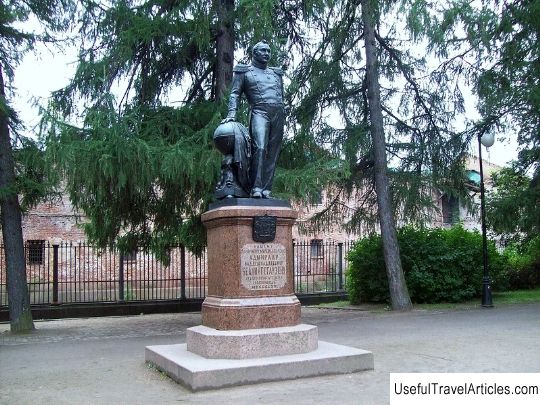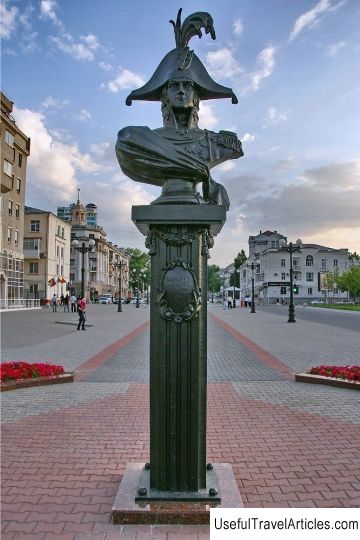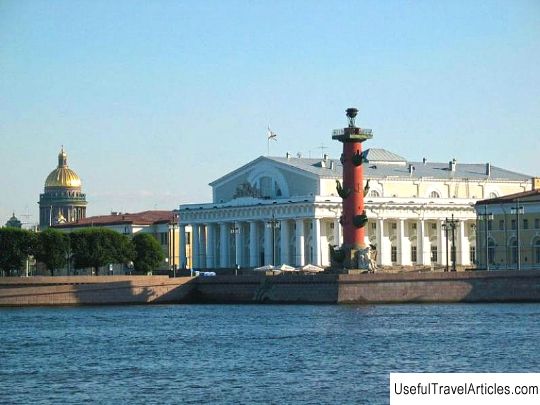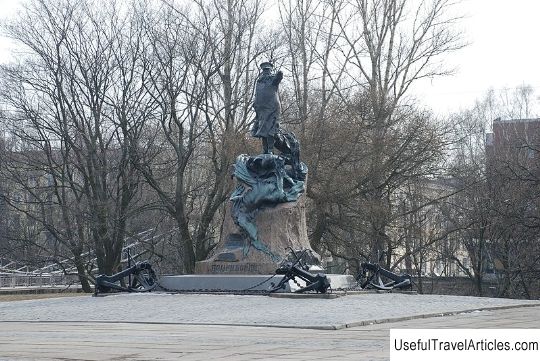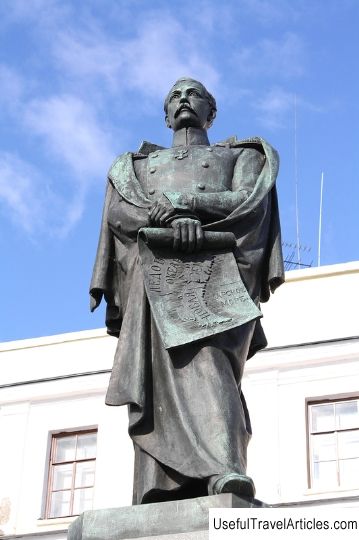Monument to I. F. Kruzenshternu description and photo - Russia - Saint Petersburg: Saint Petersburg
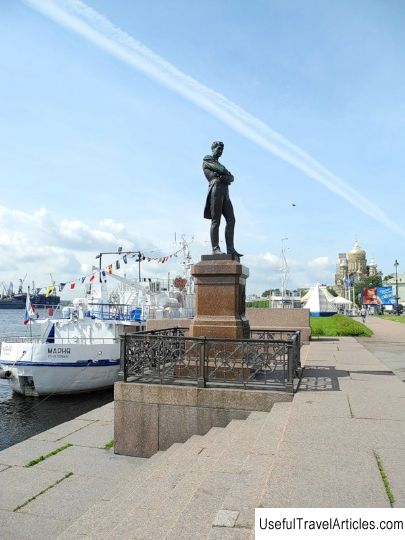
Monument to I.F. Kruzensternu description and photo - Russia - St. Petersburg: St. Petersburg. Detailed information about the attraction. Description, photos and a map showing the nearest significant objects. Photo and descriptionOpposite the St. Petersburg Naval Institute (Peter the Great Naval Corps) on the Schmidt embankment there is a monument to the Russian navigator, admiral, head of the first Russian round-the-world expedition, director of the Naval Corps Ivan Fedorovich Kruzenshtern ( 1770-1846). The authors of the monument are the architect I.A. Monighetti and sculptor I.N. Schroeder. Contribution of I.F. Krusenstern in science is invaluable. Thanks to him, errors and errors of geographical maps of that time were corrected. During the round-the-world expedition, Ivan Fedorovich Kruzenshtern was the commander of the ship "Nadezhda". During the three years of the sea voyage, not a single person from his crew was hurt. None of the inhabitants of the lands discovered during that expedition was infringed on their rights. On ships commanded by I.F. Kruzenshtern, no physical punishment was allowed. I.F. Kruzenshtern adhered to progressive political views. Even before the uprising of the Decembrists, he spoke of the need to abolish serfdom. As a young man, during the years of the alliance between Russia and England, he was ordered by the Admiralty to serve on a British military frigate. In battles and campaigns he showed himself to be a brave and courageous person. For the capture of enemy frigates, Kruzenstern was entitled to a certain share of the prize money. However, Ivan Fyodorovich replied that he would not take this money, and let it go to the Tethys team, on which he had the pleasure of serving. He was offered an impressive amount, but he decided that "the award rightfully belongs to the sailors" - his sailing comrades. He showed selflessness even at a respectable age, having refused the Demidov Prize for co-authorship in hydrographic works, in favor of his colleagues. The fate of Kruzenshtern the teacher is also surprising. He himself had to be brought up in the Marine Corps at a time when corporal punishment was the main tool for educating young sailors. Living conditions in the building were also appalling. According to the memoirs of V.V. Veselago, published in a biographical book dedicated to Kruzenshtern, Ivan Fedorovich said that with the onset of cold weather, the pupils' windows in the bedrooms were plugged with pillows so as not to freeze. Having become the director of the Marine Corps, Ivan Fedorovich became famous for his fatherly and benevolent attitude towards students, was a caring and wise mentor. A year before the significant date - the 100th anniversary of the birth of Ivan Fedorovich Kruzenshtern - in 1869, fundraising for the erection of a monument to him began. The ceremony took place on November 8, 1870. The monument is made of bronze, the pedestal is made of red granite, the fence is made of cast iron. On the front side of the pedestal, on a cartouche with a coat of arms, is written Spe fretus (Latin - living in hope), and below: "To the first Russian sailor around the world - Admiral Ivan Fedorovich Kruzenshtern." The statue of the admiral was cast at the A. Moran foundry. During the Great Patriotic War, a special structure was made to protect the monument. In the 1970s, a bronze dagger was stolen from the sculpture, which was replaced with a cast-iron copy. In 1999, employees of the Petrogradskiy District Department of Internal Affairs discovered and seized a bronze dagger during operational measures to prevent trade in art values. Experts from the State Museum of Urban Sculpture have established that this is a dagger from the Kruzenstern monument. The dagger was returned to its place. The height of the memorial pedestal is 2.6 meters, the sculpture is 3 meters.        We also recommend reading Zelve Open-Air-Museum description and photos - Turkey: Cappadocia Topic: Monument to I. F. Kruzenshternu description and photo - Russia - Saint Petersburg: Saint Petersburg. |
